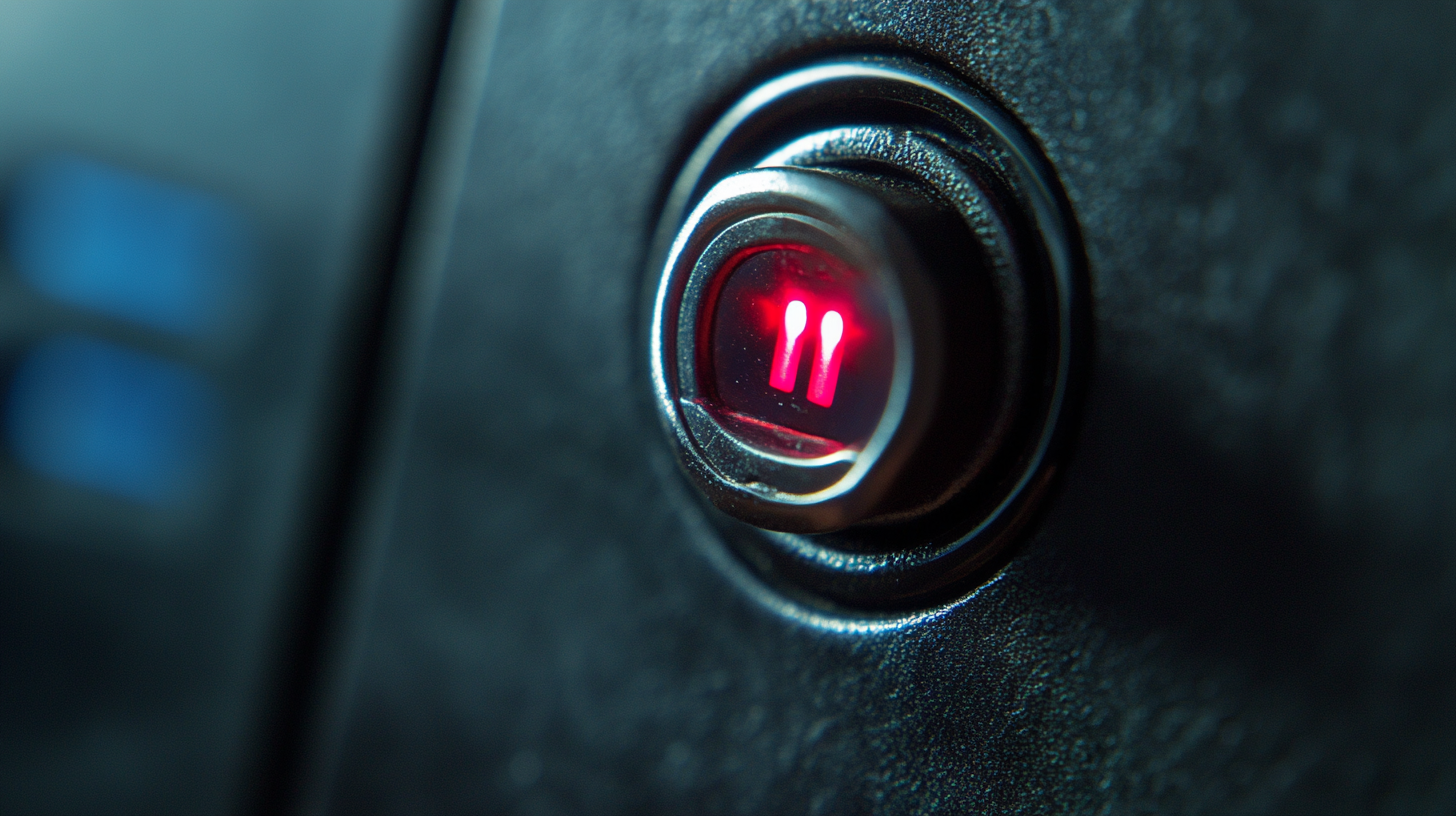Unlocking the Secrets of Best Momentary Rocker Switch Specifications and Usage Techniques
In the world of electronic components, the Momentary Rocker Switch stands out as a crucial element that combines functionality with user-friendly design. Understanding its specifications and usage techniques is essential for engineers, designers, and hobbyists alike. This blog delves into the secrets behind selecting the best Momentary Rocker Switch, exploring its various applications across industries, and the impact of import and export certifications on its quality and reliability. By highlighting key specifications, such as voltage ratings, durability, and operational mechanisms, we aim to provide a comprehensive guide that helps users make informed decisions. Moreover, we will discuss practical techniques for implementing these switches effectively in different projects, ensuring optimal performance while adhering to industry standards. Join us as we unlock the full potential of Momentary Rocker Switches and navigate the landscape of their certification requirements.

Understanding Momentary Rocker Switch Specifications and Their Importance
Momentary rocker switches are essential components in various electronic devices, providing quick on/off functionality while maintaining a compact design. Understanding the specifications of these switches is crucial for ensuring they meet the demands of specific applications. Key factors such as voltage ratings, current capacity, and mechanical life are vital in selecting the right switch. According to research conducted by industry experts, the global market for rocker switches is projected to grow by 6.5% annually, highlighting their increasing significance in modern technology.
When selecting a momentary rocker switch, consider the operating environment. Different switches are rated for various conditions, such as temperature ranges and resistance to moisture or dust. For example, a switch designed for automotive applications may require higher durability compared to those used in home appliances. Ensure to reference the manufacturer's datasheets for detailed specifications and recommended usage.
**Tips:** Always choose a switch with a higher current rating than your application requires to prevent overheating. Additionally, consider the switch's physical dimensions and mounting style to ensure compatibility with your device. Testing prototypes under real-world conditions will also help identify any potential issues before full-scale implementation.

Key Features to Look for When Choosing Rocker Switches
When selecting the best momentary rocker switches for your projects, there are several key features to consider that can significantly influence performance and user experience. First and foremost, look for the switch's electrical ratings, including voltage and current capacity. Ensuring that the switch can handle the necessary load is crucial to preventing failures or safety hazards. Additionally, consider the actuation force; a switch that requires too much pressure can lead to user fatigue, while one that’s too sensitive may cause unintended activations.
Another important aspect to evaluate is the switch's construction and materials. A durable, high-quality switch typically utilizes materials like a robust plastic housing and silver or gold contacts that can withstand repeated use without degradation. Moreover, pay attention to the switch's tactile feel and audible feedback. A satisfying click or response can enhance the user experience, ensuring that users are confident in their actions. Finally, consider the switch's mounting type and size, ensuring that it fits seamlessly into your design while allowing for easy installation and replacement. These specifications will not only ensure longevity but also that the switch performs optimally in your application.
Effective Techniques for Installing Momentary Rocker Switches
Installing momentary rocker switches can significantly enhance the functionality of various electronic projects. To ensure a smooth installation process, it's important to begin by choosing the right switch for your application.
Momentary rocker switches are available in different configurations, including single-throw and double-throw models, so consider the specific requirements of your project. Make sure to gather all necessary tools, such as wire strippers, a soldering iron, and a multimeter, to facilitate a seamless setup.
Once you have your components ready, begin by carefully determining the placement of the switch. It’s essential to create a stable mounting surface to prevent any unwanted movement during use. After drilling the necessary holes, connect the switch wiring according to your circuit specifications. This usually involves connecting the terminal pins to your power source and load. Don’t forget to test the connections with a multimeter before finalizing the installation. Proper soldering and secure fittings will ensure reliability and longevity, enabling your momentary rocker switch to perform effectively for years to come.
Common Applications and Best Practices for Usage
Momentary rocker switches are widely used in various applications, making them a popular choice for controlling electrical devices. Their design allows for easy on/off functionality, which is particularly suitable for temporary operations such as headlights in vehicles, fan controls, and machinery activation. In automotive applications, for instance, these switches provide a streamlined way to operate components without the need for a constantly engaged switch. This feature is essential in settings where the user needs to maintain focus on driving while still controlling functionalities effortlessly.
When implementing momentary rocker switches, it’s crucial to consider best practices to ensure reliability and safety. First, selecting a switch with the appropriate electrical ratings is essential for the application it will serve. Overloading a switch can lead to premature failure or hazards.
Additionally, proper mounting and ensuring a secure connection are vital. Using protective covers or enclosures can further enhance durability, especially in industrial environments where dust and moisture are prevalent. Lastly, regular maintenance checks can help identify wear and prevent operational issues, ensuring that the switches are always functioning optimally in their specific applications.
Quality Assurance in Chinese-Made Rocker Switches: A Global Perspective
When it comes to rocker switches, especially those manufactured in China, the emphasis on quality assurance has become a crucial factor for global consumers. The rapid industrial advancements in China have led to the production of highly efficient and cost-effective rocker switches, but this is often overshadowed by concerns regarding quality. Companies worldwide are increasingly vigilant in vetting their suppliers, ensuring that the switches they source meet international safety and reliability standards. This insistence on quality is not just a matter of compliance; it's about maintaining brand integrity and customer trust in an increasingly competitive market.

Moreover, the techniques employed in the manufacturing and testing of rocker switches are vital in ensuring their safety and efficacy. Many manufacturers now adhere to rigorous testing protocols that include environmental simulations and electrical performance evaluations. These processes are designed to confirm that the switches can withstand extreme conditions while functioning optimally. In addition, advancements in technology have allowed for enhanced monitoring throughout the production process, enabling manufacturers to identify and rectify potential defects early, thus enhancing overall quality. As global reliance on Chinese-made rocker switches continues to grow, it is imperative that these quality assurance measures remain a priority for manufacturers aiming to succeed in both local and international markets.

